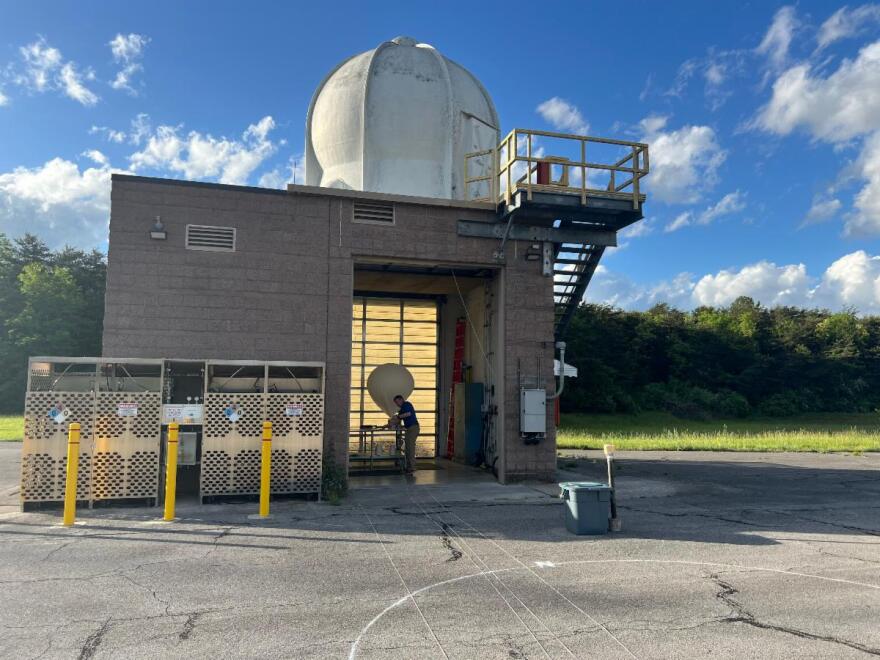With technology advancing every day, it might be a bit of a surprise to you that the leading weather agency in this country still relies on some very old tech to feed data into its forecasts.
The National Weather Service has been using weather balloons since the 1930s – and that practice is still very much in play today. Attached to those giant balloons (they expand as they ascend thousands of feet into the atmosphere, sometimes reaching the size of an apartment) are devices known as radiosondes.
Those devices have shrunk over the decades, but essentially are still used for the same purpose today. I tagged along with Robert Stonefield, a meteorologist with the National Weather Service office in Blacksburg, for a launch.
“It’ll take about 90 minutes from when we launch to when [the balloon] pops. And when it’s going up, it’s actually collecting pressure data, temperatures, dew point, relative humidity, wind direction – all that data going up through the column of air all the way up to 90,000 feet. That gets put into the computer models,” Stonefield explains.


Many NWS offices across the country launch balloons twice a day – 7AM and 7PM – and sometimes more if severe weather is expected (you can actually track them as they ascend here). Meteorologists in charge of this process have a 90-minute window to get their balloons into the air, which is useful if storms producing lighting are in the area – making it too dangerous to launch.
From there, as Stonefield explains, all of that data is then funneled into computer models, which meteorologists across the nation use to craft their forecasts.
The balloon’s radiosonde produces what is called a sounding or Skew-T plot, which can be seen back in the office in real time as it ascends into the atmosphere.
“And we get it on the computer; we can see all the data that’s coming in. We get a sounding profile, where we can see temperature and dew point – where they’re close together if there’s clouds there or some other features that can tell us if there is severe weather is imminent or coming.”
Stonefield says the NWS is working on using satellite technology and airplanes to get some of this information, but there is a reason the balloons have been used for so long – it’s tried and true to get the data that’s crucial for forecasting.


He adds it would be very difficult for meteorologists to do what they do without the balloon launches.
“We don’t know what the atmosphere is doing. We see it at ground level, maybe depending on how tall the building is – what we can see. But we can’t see the moisture, we can’t really see the winds – how it changes as it goes up in the atmosphere.”
Since the balloons are launched so frequently, the National Weather Service has worked to make all of the materials biodegradable over the years – as they often drift more than 100 miles away from the office where they get launched. The radiosondes are designed to be single use, so if you ever happen to find one, the National Weather Service says you can just toss it.
In addition to feeding those computer models, the data has some other uses as well. That includes climate change and air pollution research.
But for the most part, these giant balloons play a giant role in making sure the general public has accurate and timely forecast information.
They also put a giant smile on this meteorologist’s face on this warm, May evening…


Thanks for checking out this edition of CommonWx — the weather and climate newsletter from Radio IQ. Use this link to get the newsletter sent to your inbox.


